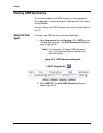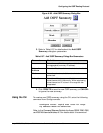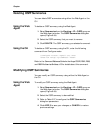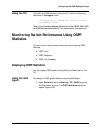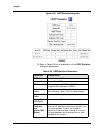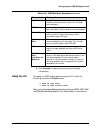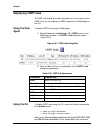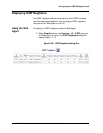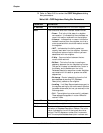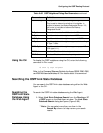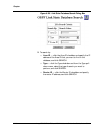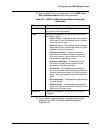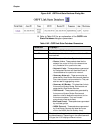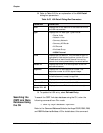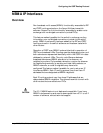
11-26 Avaya P550R, P580, P880, and P882 Multiservice Switch User Guide, Version 5.3.1
Chapter
2. Refer to Table 6-60 to review the OSPF Neighbors dialog
box parameters:
Table 6-60. OSPF Neighbors Dialog Box Parameters
Parameter Definition
IP Address The IP address associated with the OSPF neighbor.
State The functional level of an interface. States include:
• Down - This is the initial state of a neighbor
conversation. It indicates that there has been no
recent information received from the neighbor.
• Attempt - Indicates that no recent information
has been received from the neighbor, but that a
more concerted effort should be made to contact
the neighbor
• INIT - Indicates that the Hello packet has
recently been seen from the neighbor. However,
bidirectional communication has not yet been
established with the neighbor.
• 2-Way - Communication between the two
routers is bidirectional.
• ExStart - This is the first step in creating an
adjacency between the two neighboring routers.
The goal of this step is to decide which router is
the master, and to decide upon the initial
Database Description sequence number. Neighbor
conversations in this state or greater are called
adjacencies.
• Exchange - Router is describing its entire link
state database by sending DD (Database
Description) packets to the neighbor.
• Loading - Link State Request packets are sent to
the neighbor asking for the more recent LSAs that
have been discovered (but not yet received) in the
Exchange state.
• Full - The neighboring routers are fully adjacent.
These adjacencies appears in router-LSAs and
network-LSAs.
Router ID The router ID of the neighbor.
Master The state of the neighbor: master or slave.
DD Number The hexadecimal number used to sequence the
collection of Database Description Packets. The initial
value (indicated by the Init bit being set) should be
unique. The DD sequence number then increments
until the complete database description has been sent.



